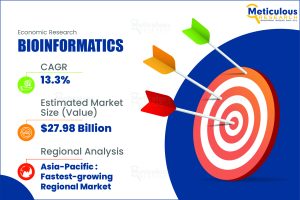**Spatial Genomics and Transcriptomics: Emerging Trends and Applications**
Spatial genomics and transcriptomics are in the early stages of development, with researchers actively exploring their applications across fields like oncology, neurology, and developmental biology. As the need to map genomes and transcriptomes for a deeper understanding of normal versus diseased tissues grows, so does the demand for spatial technologies. Increased research initiatives have led to significant funding for spatial genomics, enabling the creation of advanced detection technologies and data visualization tools that facilitate the analysis of large genomic datasets. This research is pivotal in discovering new drugs, developing personalized medicines, and improving our understanding of disease mechanisms.
Download Research Report Sample @ https://www.meticulousresearch.com/download-sample-report/cp_id=5763
### Applications in Neurology Research
Spatial genomics holds considerable promise in revealing the molecular and cellular mechanisms behind various neurological disorders. In neurology, its applications include spatial profiling of brain tissues, identifying cell types, characterizing neuroinflammation, exploring neural circuits, and aiding in drug discovery and target identification. By comparing spatial gene expression profiles between healthy and diseased brain tissues, researchers can identify specific molecular signatures linked to neurological conditions, paving the way for new biomarker discoveries.
The rising prevalence of neurological disorders is driving research in spatial genomics within this field. For instance, the Alzheimer’s Association estimates that as of 2023, approximately 6.7 million Americans aged 65 and older are living with Alzheimer’s disease. Projections indicate a 68% increase in dementia prevalence in middle- and low-income countries by 2050. Spatial genomics allows researchers to study the spatial distribution of inflammatory markers and immune cell populations in the brain, providing valuable insights into the inflammatory processes associated with conditions such as Alzheimer’s disease and multiple sclerosis.
Key players in the market, including NanoString Technologies, Inc. (U.S.), Vizgen Inc. (U.S.), and Resolve Biosciences GmbH (Germany), are providing spatial genomics and transcriptomics panels and assays specifically designed for neurology research.
### The Role of Microfluidic Spatial Transcriptomics
Recently, the integration of microfluidic technology with spatial genomics and transcriptomics has emerged as a significant trend. Combining Fluorescent In Situ Hybridization (FISH) with microfluidic technology enables the automated sequential detection of multiple targets, allowing researchers to create images using up to 1,000 probes to visualize gene expression spatial patterns.
The incorporation of microfluidic technology with methods like seqFISH (sequential Fluorescence In Situ Hybridization) and MERFISH (Multiplexed Error-Robust Fluorescence In Situ Hybridization) is recognized as a reliable approach for observing multiple genes and their spatial configurations. Microfluidic technology also reduces the amount of buffer and dye solutions needed while maintaining compatibility with biological applications and microscopy.
Microfluidic platforms and lab-on-chip technologies enhance seqFISH and MERFISH methodologies by lowering costs, introducing automation, enabling multiplexed detection, and decreasing experiment duration.
Browse in depth @ https://www.meticulousresearch.com/product/spatial-genomics-market-5763
### Insights from Market Analysis
Recent insights from Meticulous Research® indicate a promising future for the spatial genomics market, projecting it to reach a value of $3.23 billion by 2031, with a remarkable Compound Annual Growth Rate (CAGR) of 27.8% from 2024 to 2031. The current focus on spatial genomics R&D is driving innovation, with trends emerging around assay automation, multiplexed detection, integration of microfluidic technologies, and advancements in data visualization tools.
North America is expected to maintain a significant market share in 2024. Influential players such as NanoString Technologies, 10X Genomics, Illumina, and Akoya Biosciences have established a robust presence in various regions, promoting the widespread adoption of their products. This comprehensive overview from Meticulous Research highlights the growing landscape of spatial genomics and transcriptomics.
### Conclusion
The spatial genomics market, currently in its infancy, is poised for significant growth in the coming years. Key factors driving this expansion include the increasing applications of spatial genomics in drug discovery, the rising use in cancer research, advancements in Next-Generation Sequencing (NGS), and the growing focus on biomarker detection amid rising cancer prevalence.
Moreover, the heightened adoption of personalized medicine and gene therapies, combined with increased investments in spatial genomics, is expected to create favorable growth opportunities for market participants. As research in this area progresses, spatial genomics will play a vital role in advancing our understanding of complex biological systems and improving health outcomes.
Request Customization Report @ https://www.meticulousresearch.com/request-customization/cp_id=5763







